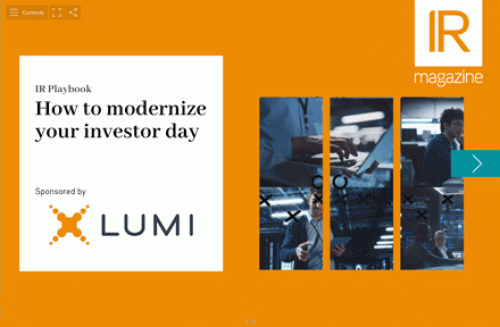Investor meetings, particularly roadshows, are time-consuming yet vital for building relationships, increasing ownership and securing fair valuations. In this article, you’ll discover the key steps to successfully plan, execute and follow up on roadshows.
How often, where and organized by whom?
If your stock is hot, things will be easy as numerous investors will want to meet you on roadshows and the banks will fight for the right to organize them. But your resources will always be limited regardless of the size of the IR team so it is important to know what you want. If your stock isn’t hot, organizing roadshows becomes harder, and you’ll need to push banks to do it at all, or do it yourself.
Regardless of whether your roadshow is planned with a bank or by yourself, there are five essential steps to follow to ensure a successful event.
1. Set relevant goals
Have you defined specific goals for your roadshow? Whether it’s increasing US ownership, attracting key investor types like sovereign wealth funds or securing a prominent institutional investor, clear objectives are crucial. Your goal might also be to strengthen relationships with current holders and encourage them to increase their stakes.
If you haven’t set goals yet, now is the time. Start by comparing your ownership list with those of your peers to identify gaps. Every investor meeting – especially a roadshow – should focus solely on achieving these objectives. Ensure you have the right tools and data to track and evaluate your progress.
2. Meet the right investors
It’s convenient to accept any itinerary suggested by the bank but remember: you need to be selective about whom you meet. Not all institutions work with all banks, making it difficult to connect with specific investors at a roadshow in Chicago, for instance, if the bank doesn’t have that institution on its client list.
Some banks have stronger presences in certain cities, so it’s valuable to know where to focus your efforts. Ensure the institutions you target are relevant, such as those holding shares in peer companies or of similar size and sector, and that they have a significant average holding size.
Another important factor is the liquidity of your own stock. Track and communicate the total liquidity across all venues and trade types, including dark pool trades, not just open trading and block trades on the primary exchange. Collaborate closely with banks when planning roadshows to maximize outcomes for all parties involved.
3. Adapt to your audience
Knowing your crowd is crucial for all investor meetings, especially during roadshows, where the knowledge levels of investors may vary throughout the day. Before the meetings, review any past interactions you’ve had with these investors and consult your notes. While you hope investors will research your company beforehand, it’s equally important for you to familiarize yourself with them, perhaps commenting on the stocks or sectors they’ve been investing in recently, or noting how long a portfolio manager has been managing his/her portfolio.
It is also important to understand when to bring the CEO/CFO to the meeting. Many investors will request their presence, but in most cases it doesn’t make sense to do so until you are certain about the knowledge level of the investor and its intention to actually go ahead and invest.
4. Proper logging and follow-up
Make sure to take proper notes in the meetings; sometimes it is hard to get all the details in place, but just writing a few bullets will often be enough to make you remember the essence after coming back to the hotel or office. Furthermore, it is highly recommended to follow up instantly with the investors you met, thanking them for the meeting and following up with answers to any questions that weren’t addressed in the meeting.
5. Evaluation
At the end of the year it is important to evaluate the results of all investor meetings and roadshows.
- What roadshows were successful in terms of investors actually buying shares?
- What roadshows helped you achieve the goals you set going into the new year?
- Has the outcome been better or worse depending on which bank organized the roadshow, or even if you organized it yourself?
Once you have finalized the evaluation, it is high time to set new goals for the coming year. A key thing is to have an IR platform that allows a data-driven approach to investor relations where meetings and events are connected to live datasets, which improves your ability to organize and evaluate successful investor meetings and roadshows. By leveraging an IR platform in combination with the five steps above, you’ll be well on your way to mastering roadshows.
This article was written with valuable input from Alexander Bergendorf, head of IR at Axfood, listed on Nasdaq Stockholm Large Cap










